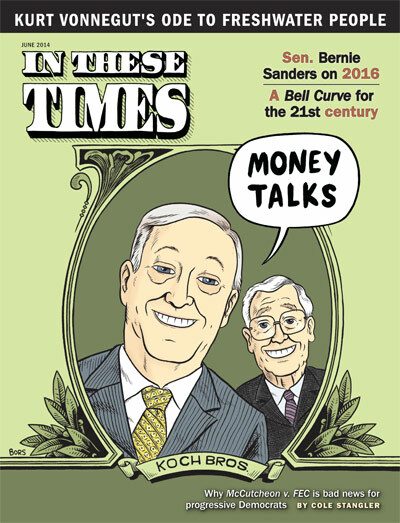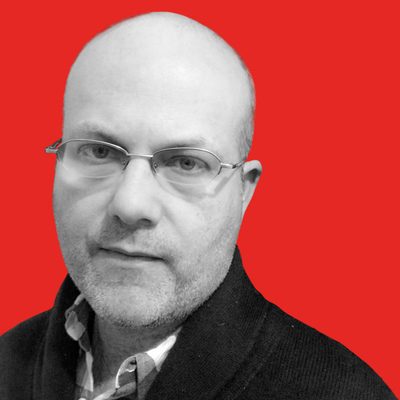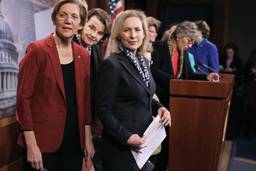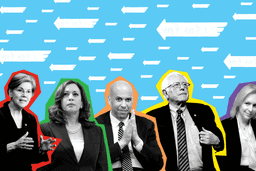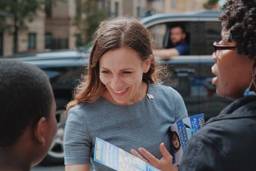
The New Deal is responsible for such a large share of the nation’s infrastructure that it is, in some ways, a victim of its own success — pervasive but invisible. Its most famous legacy, Social Security, transformed life for the elderly in the United States — a landmark achievement in itself. But the New Deal also transformed life for the entire nation in ways that we now take for granted. Its programs built thousands of roads, bridges and buildings that are still in use, created and improved a vast number of public parks and utilities, and initiated a flowering of public art.
The Living New Deal (LND) attempts to recapture — and foster — some of the New Deal’s transformational energy by cataloging the projects that remade America during the Great Depression. The items in its database range from obscure murals in post offices to the San Francisco-Oakland Bay Bridge. LND’s database, which now has about 6,000 entries and is steadily growing, is searchable by city and state, project category, agencies and artists.
“People simply don’t know how much the New Deal did,” says Richard Walker, director of the project. “The record-keeping was spotty at best. There are tens of thousands of sites to be documented. It’s astounding. All the way from the big dams and the magnificent stuff, right down to sidewalks and sewers and trees and trails. It’s not possible to document it all.”
The project’s goal of documenting the New Deal down to the smallest minutiae is ultimately grounded in a deeply political — rather than antiquarian — ambition.
“This database gives us a solid basis to say, ‘Look at what the New Deal did,’” Walker says. “If I’m making an argument about education, for example, and what neoliberalism has done to education, I can point back to the New Deal and say, ‘Well, we have an alternative. Where do you think all these great California public universities came from? They came from that spirit of the New Deal.’ ”
LND is an outgrowth of separate research projects begun in the 1990s to recover the history of the New Deal in California by Gray Brechin, a historical geographer, and Harvey Smith, president of the National New Deal Preservation Association. In 2005, they coordinated their efforts and collaborated with a team of volunteers to systematically record the New Deal’s legacy in the state. Brechin and Smith imagined that the project would take two or three years, but by 2010, they had a far-from-complete database of about a thousand sites. They decided to go national with the project and found a home for it at the Department of Geography at the University of California, Berkeley. The partnership with UC Berkeley has helped LND assemble a staff of a dozen people and build sophisticated mapping tools and a more accessible website. Its web traffic has doubled over the past year.
Public goods
The New Deal lasted roughly a decade — from Franklin D. Roosevelt’s first year in office, 1933, to the middle of World War II — and encompassed dozens of government programs. About 25 percent of the U.S. workforce was unemployed during the worst years of the Depression, and Roosevelt strongly favored programs that were “useful,” as he once wrote, and “of a character to give employment to those on the relief rolls.”
The Works Progress Administration—the largest and most famous of the New Deal jobs programs — employed an average of about 2 million people per month from 1936 to 1941. But less well-known programs also generated hundreds of thousands of jobs. The Civilian Conservation Corps (CCC), for example, hired young men to work on rural, government-owned land, planting trees, building parks and wildlife shelters, and carrying out various public-works projects. At its peak in 1935, the CCC employed about 500,000 people.
In addition to documenting the extent of what the New Deal created, LND’s mission is to foster a sense of public- spiritedness. California was in the midst of a prison-building boom in the 1990s, when Harvey Smith began researching the New Deal’s legacy in the state, and he found the two different models of public-works investment striking.
“It seems like we can go two different directions,” Smith says. “We can think of ways to be creative and put people to work and leave something for the future. Or we can keep criminalizing people for social behavior that comes out of economic conditions.”
Conservatives will resist the Living New Deal’s mission, naturally, but it isn’t always an easy sell on the Left, either. Since the 1960s, left-leaning historians have tended to focus on the failures and shortcomings of the New Deal: how it reformed capitalism just enough to rescue it, and the fact that it had deeply racist and sexist dimensions.
“All of which is true,” Walker says. “And we can’t be uncritical. But things have gotten so bad that the New Deal looks a lot better than it used to, as does social democracy. The New Deal was pretty amazing compared with how bleak things look today. It gives us a point of leverage for an argument about the importance of social responsibility, the public good, and public investment. These were public facilities. There was always a high moral value put on public spaces serving the general good.”
Get ‘em hooked
Building the database is LND’s primary ambition, but several other components are in the early stages. LND aims to build a virtual library that connects people to films, books, articles and other resources relating to the New Deal, and it offers resources for high school and college educators, including sample syllabi. The LND is also collecting stories about how New Deal projects shaped people’s lives.
Another goal in the planning stages is a series of maps that identify important New Deal sites in popular tourist destinations, including Chicago, New York, San Francisco and Washington, D.C.
For now, though, the base of people who benefit from the LND’s work consists mainly of “a motley crew of rebellious and interested spirits,” as Walker puts it, including family and local historians, genealogists, preservationist groups and “New Deal enthusiasts.”
“Getting more people involved locally is key,” Smith says. “Even though we’re surrounded by it, the New Deal is like a buried civilization. People happen on it and get hooked.”
Walker and Smith hope that the momentum generated by LND will eventually lead to the creation of a museum to preserve thousands of New Deal artifacts that are at risk of being lost to history. Such an institution would not only preserve the past. Like LND, it would also help point the way toward an alternative future.
“The New Deal has in many ways defined American politics,” Walker says. “The abstract political debate between Left and Right has been going on since the 1930s. The Right has won over the last 30 years. The Reaganites had an explicitly anti-New Deal agenda, and a lot of its legacy has been systematically dismantled since the 1980s. So this is a foundation to say something new and important about it.”
